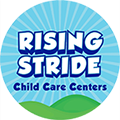Preschool is a wonderful time of exploration, learning and growth. Although most parents picture STEM activities as bubbly science experiments or learning to code, many STEM activities can be done by preschoolers as well.
By putting STEM activities in the hands of children as early as possible, you can get a jump start in sparking their interest in the sciences, math, and other higher learning. Here are a few fun activities your child can do to learn more in these areas.
Does it float or sink?
Children love playing with water! Discovering which types of materials and items sink and float is a wonderful experiment for little ones that will naturally spark the engineering side of their brain. You can encourage your child by giving them a plastic egg and bucket of water – challenge them to make it sink.
Your child can experiment with putting different things in it to see if that will help it sink or float.
How do plants grow?
There are many great board books available that talk about the growth process, but there’s nothing quite like watching it in action. If you plant a seed in a clear cup so it can be seen from the edge, your child can watch the seed put out shoots and roots and grow into a big plant one day.
Children can also experiment with different planting mediums and locations. What happens if a seed is planted in sand? What if the plant is put in a dark closet? By comparing how these things affect the plant, children can learn more about plants.
THE BENEFITS OF STEM EDUCATION
There are so many benefits to incorporating a STEM curriculum into early childhood education. Not only are students gaining exposure to science, technology, engineering, and math early, but their learning is vibrant and engaging in special ways.
The excitement that comes from project-based STEM education could very well lead to more students continuing their study of any of these subjects well beyond their primary education. It also teaches them that learning is fun. This is just the tip of the iceberg though when it comes to why STEM is so important for students.
Project-based learning
Especially in early childhood education, STEM learning provides the significant benefit of driving active learning. Many activities are hands-on, including:
- Building something out of a set of materials
- Playing a game as a group
- Using a specific piece of technology to reach a goal
This not only makes learning fun, it becomes more memorable too. Ask any first grader what they did in school today. They won’t tell you about the worksheets they completed or the addition facts they practiced, but they’ll talk for an extended amount of time about the car they made with a toilet paper roll, straws, and some Lego wheels.
Retaining these activities may not make it obvious in the moment students have learned anything significant, but mathematical formulas and scientific rules are hiding all throughout STEM education, in addition to the soft skills students develop.
Collaborative learning
There’s nothing like a group project to get students thinking critically while working out how to meet the goals of the activity when a bunch of personalities have to come together. This builds social skills and improves communication. Self-esteem can go up when a group succeeds. This added confidence may make it easier for those students to speak up in class, or feel more comfortable continuing to learn within that particular subject.
Talking with their peers as they work in a group also has the added benefit of improving language skills. The introduction to new vocabulary within the STEM subjects also enhances language. They’re picking up new information, while getting to practice the effectiveness of what they say so they learn how to craft constructive sentences others will really hear.
Developing these skills at an early age will only make group work go more smoothly as they grow and projects are assigned with more creative freedom and less teacher support. Then there’s the professional workplace, where collaboration happens often. Knowing how to handle different personalities and to work effectively within any group (because they’re been practicing these skills since they were very young) can make a world of difference when it comes to success.
Collaborative learning also goes hand-in-hand with technology, and another student favorite, gamification. Online learning tools that present information through games can engage the whole class in collaborative play. It can open up young students to the joys of learning and the realization that there are many different ways to access information.
How does wind move things?
Experimenting with wind is a fun activity that can provide a lot of learning opportunities. Kids can use the wind to catch streamers on sticks, fly kites, or use their own breath to push boats along water. By measuring how far each child’s breath can push a boat on water, children can be introduced to the concept of distance and measuring in a fun and simple way.
Why introduce your preschooler to STEM?
STEM stands for Science, Technology, Engineering and Math. Introducing these concepts at a young age can be of great benefit to your child. Young kids who are regularly exposed to STEM learning are better able to enjoy solving problems and help support early math and science development.
When your preschooler learns to ask questions and experiment to find answers, they’re learning how to figure out problems independently.
Many people think that preschool age children can’t do well in STEM activities because it is associated so strongly with older students. As long as STEM activities are kept simple and fun however, any child can learn and benefit from these wonderful learning activities.
Benefits of STEM in preschoolers
STEM activities can help improve language skills in preschoolers. New vocabulary is introduced to them in novel ways as they learn about different subjects, helping them gain access to new words. STEM activities can also help preschoolers learn how to work together to come up with an answer—or try learning on their own.
Both methods of learning have their benefits, and can help your preschooler as they explore the world. If you haven’t tried a STEM activity with your child yet, doing so can be both fun and beneficial for your child.

